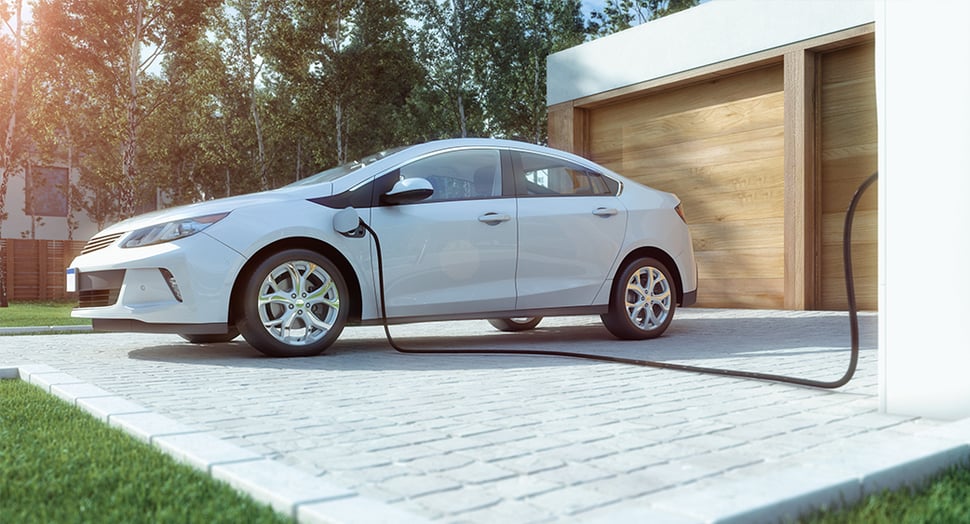 Hot weather can have a number of negative impacts on your EV, like decreasing the battery's state of health faster.
Hot weather can have a number of negative impacts on your EV, like decreasing the battery's state of health faster.
Summertime brings about hot weather and plenty of adventures to go on. However, your electric vehicle doesn’t particularly like the heat.
Hot weather can have a number of negative impacts on your EV, but knowing what to expect can help you keep your car healthy.
Here are some of the ways heat will affect your car, plus some ways you can minimize the effects:
Driving range
Extreme weather conditions have a significant impact on driving range, according to research conducted by AAA. In temperatures of 95 degrees Fahrenheit and the air conditioning on (a must for most in 95-degree heat), driving range decreases 17%.
Of course, different EVs will have unique reactions to extreme weather. Shortly after AAA’s findings were published, a Tesla spokesperson responded by stating that their models are unlikely to experience this significant of a drop in range, The Verge reported.
“Based on real-world data from our fleet, which includes millions of long trips taken by real Model S customers, we know with certainty that, even when using heating and air conditioning, … the decrease in range at 95 degrees Fahrenheit is roughly 1 percent,” the spokesperson said, according to The Verge.
In any case, lower driving ranges have two big implications for car owners. First, they’ll need to be judicious about how far they travel before charging up. Second, charging more frequently will increase the cost to operate the vehicle.
EV drivers can take several measures to maximize their range in hot weather, Geotab explained. A few ideas include:
- Limit use of features like air conditioning and smart stereos.
- Maintain a consistent speed to minimize accelerating and braking, and avoid high speeds.
- Use energy-saving settings whenever possible.
- Limit weight in the car.
Planning ahead for your drive can help. Cool the cabin while the car is still plugged into the charger so it’s the right temperature when you get in, Energy.gov recommended. Not only will this make it more comfortable for you and your passengers, but will also reduce stress on the battery.
Battery life
EV batteries will deteriorate over time, just like any other type of battery. However, certain circumstances can promote faster degradation.
A study of 6,000 electric vehicles conducted by Geotab found that hot climates decreased batteries’ states of health faster than those in temperate climates. Additionally, people who used Direct-current fast charger (DCFC) in hot climates saw an even faster rate of battery degradation.
Rapidly charging the battery creates higher temperatures due to the accelerated electrical currents. This may compound the effect that hot weather has on the battery. Geotab suggests that EV drivers use lower-power charging methods whenever they can to promote longer battery health.
Tire safety
Hot weather can decrease the reliability and safety of any car tire, Consumer Reports pointed out. Improperly inflated tires can overheat in the summer, and in the worst cases, this can cause a blowout. Plus, as Energy.gov pointed out, tires with the incorrect inflation can reduce efficiency.
To make sure your tires are in good shape, use a tire pressure gauge to check the inflation monthly. Inflate the tires according to the car’s specifications, which can usually be found on the placard on the driver’s door jamb.
Storage options
When you’re not using your EV, make sure it’s being stored in a location that’s not too hot. Heat causes undue stress to the battery, which will shorten its life as well as drain its charge.
Ideally, you can leave your car in the shade or a covered garage. If this isn’t an option, sun screens or car covers can help keep the sunrays off the vehicle.
When it’s being stored, consider keeping it plugged into the charger. This will allow climate control features to continue to cool the car’s battery as needed.
Installing a residential electric vehicle car charger at your home is a good way to ensure you have what you need to keep your car healthy throughout the summer months. To learn about the options available to you, and how to get it installed at your home, reach out to Webasto.
SOURCES
https://newsroom.aaa.com/2019/02/cold-weather-reduces-electric-vehicle-range/
https://www.geotab.com/blog/ev-battery-health/
https://www.energy.gov/eere/electricvehicles/maximizing-electric-cars-range-extreme-temperatures

